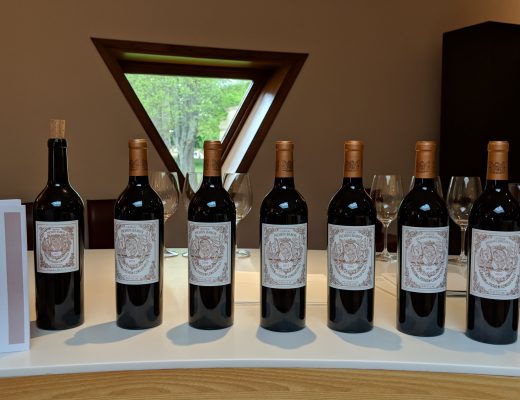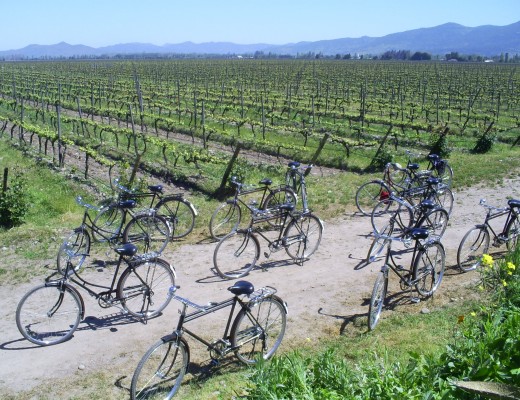Merlot was a favourite, in many countries, for many years. There is really little not to love about it. A common description would read: red berry and plum aromas, moderate acidity, smooth texture and soft tannins. Sounds good, right? Then, in 2004, an Indie film about a (fairly annoying) anxiety-ridden wine snob who detests Merlot and lives for Pinot Noir hit the big screen. The movie was called “Sideways”. Since then Merlot sales have plummeted in North America while Pinot Noir has gone through the roof. It seemed like a fad at first, but 11 years later it is (sadly) still cool to say that you don’t drink Merlot. This drives me crazy. I would like to take all the haters out there and make them blind taste a whole slew of Merlots…from Bordeaux, from California, from Chile. I am convinced that they would change their tune after a couple of sips.
Merlot does not simply boil down to fruity, round and easy-drinking. The grape is planted around the world, from Bordeaux to Chile to California and beyond. It is the most planted red grape in France. Depending on where it is grown, the care taken in the vineyard and the vinification techniques employed, the wine can be very different. In cooler climates like the right bank of Bordeaux, Merlot takes on earthy aromas, has fresh acidity, a weightier structure and more firm tannins. It is often mistaken for Cabernet Sauvignon, though generally has riper fruit aromas and a fleshier, broader mid-palate. In warm climates, such as the Napa Valley, Sonoma or Paso Robles in California, Merlot is more voluptuous with rich, fruit flavours, a velvetty texture and soft tannins. It is a grape that can handle oak (in measured doses); taking on a richer texture, more firm but well-rounded tannins.
Most people consider Cabernet Sauvignon to be the major grape of Bordeaux, but there is actually significantly more Merlot planted. On the left bank, Merlot is blended with Cabernet Sauvignon to act as “the flesh on Cabernet Sauvignon’s bones”. On the right bank, Merlot is the dominant player, usually with Cabernet Franc (Merlot’s father) in the supporting role. The clay and limestone-rich soils of Pomerol and St. Emilion are what Merlot loves. Pomerol is the smallest appellation in Bordeaux, with only 800 hectares under vine. It is also home to the most sought-after, expensive Châteaux. Its best wines are described as powerful, opulent, and even decadent. St. Emilion is one of the largest wine producing regions of Bordeaux. There is a diverse array of soil types, and consequently, a wide range of wine styles from elegant and light, to richer and more concentrated. Beautiful minerality is a feature of top St. Emilion estates planted on the limestone slopes.
Merlot is the third most planted red variety in Chile. The Colchagua Valley, the South-Western half of the Rapel Valley region, is gaining increasing attention for the high quality of its Merlot. Cooling breezes from the Pacific Ocean temper the warm Mediterranean climate and give the wines elegance, vibrant acidity and bright, red fruit flavours. Apalta, which stands for “poor soils” in the local dialect, is one of the best vineyards in the area. The low fertility soils force the vine roots to dig deep and produce wines with excellent depth of flavour and good tannic structure.
Despite waning interest for the grape, there are still substantial Merlot plantings throughout California. In the Napa Valley, Cabernet Sauvignon generally gets pride of place on the slopes. Merlot is often planted on the hot valley floor, where its intense red berry and plum aromatics, and smooth texture, make it the perfect blending partner to soften Cabernet lead blends. There are however a number of serious producers making excellent Merlot dominant wines, with lush, hedonistic profiles.
For the purposes of this initial overview tasting, I chose examples from the following producers (What do VW, PW and LW mean? Click on my wine scoring system to find out).
Casa Lapostolle “Canto de Apalta” Rapel Valley 2011 – 90pts. PW
Unfortunately it was impossible to find anything other than very entry level Chilean Merlot at our dear liquor boards (sigh…), so I had to settle for this blend. Though settle is a poor word, as it is lovely. Inviting black cherry, cassis, menthol and spiced aromas, very fresh on the palate with a full, velvetty frame, marked but balanced oak and alcohol. Only moderate length and complexity, but worth the price.
Grapes: Merlot, Carmenère, Cabernet Sauvignon, Syrah
Where to Buy: SAQ (22.25$)
Château Yon Figeac St. Emilion Grand Cru Classé 2011 – 89pts. PW
This sustainably farmed estate is hailed for its consistent quality even in mediocre vintages such as 2011. Restrained notes of tobacco, cedar, red berries and kirsch on the nose. Dry, medium-bodied though somewhat lean in structure with fine grained tannins, subtle oak and an attractive tobacco dominant finish.
Grapes: Merlot, Cabernet Franc
Where to Buy: Not currently available in Québec or Ontario
Château le Caillou Pomerol 2009 – 88pts. LW
Situated on the iron-rich clay soils of the plateau of Pomerol, this tiny 7 hectare estate is organically farmed. Understated yet complex palate of aromas including animal notes, plum, red berries, menthol and cedar. Vibrant acidity, full-bodied with moderate alcohol, firm but ripe tannins and well integrated oak. Lacking some richness and fruit expression considering the vintage.
Grapes: Merlot, Cabernet Franc
Where to Buy: LCBO (52.95$), SAQ – 2010 vintage (43.00$)
Sterling Vineryards Napa Valley Merlot 2012 – 92pts. PW
Merlot is grown here on the valley floor, on deep rooting, volcanic stone soils. Heady aromas of sweet cherry, baked plum, eucalyptus and floral notes. Smooth, full bodied and velvetty, with toasty oak and a sweet, red berry finish. Big and bold, with just enough acidity to maintain good balance.
Grapes: Merlot
Where to Buy: LCBO (24.95$)





No Comments